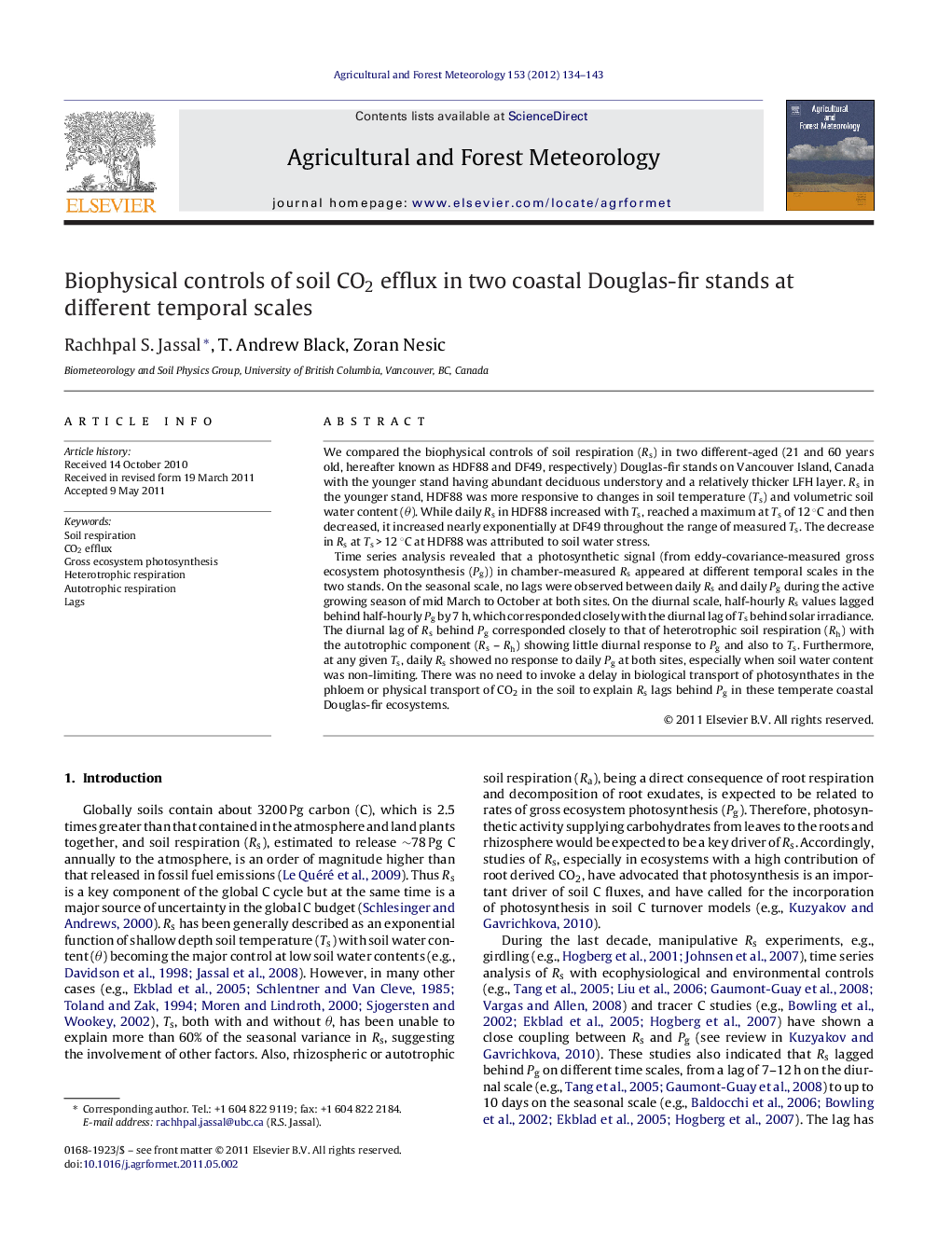| Article ID | Journal | Published Year | Pages | File Type |
|---|---|---|---|---|
| 82142 | Agricultural and Forest Meteorology | 2012 | 10 Pages |
We compared the biophysical controls of soil respiration (Rs) in two different-aged (21 and 60 years old, hereafter known as HDF88 and DF49, respectively) Douglas-fir stands on Vancouver Island, Canada with the younger stand having abundant deciduous understory and a relatively thicker LFH layer. Rs in the younger stand, HDF88 was more responsive to changes in soil temperature (Ts) and volumetric soil water content (θ). While daily Rs in HDF88 increased with Ts, reached a maximum at Ts of 12 °C and then decreased, it increased nearly exponentially at DF49 throughout the range of measured Ts. The decrease in Rs at Ts > 12 °C at HDF88 was attributed to soil water stress.Time series analysis revealed that a photosynthetic signal (from eddy-covariance-measured gross ecosystem photosynthesis (Pg)) in chamber-measured Rs appeared at different temporal scales in the two stands. On the seasonal scale, no lags were observed between daily Rs and daily Pg during the active growing season of mid March to October at both sites. On the diurnal scale, half-hourly Rs values lagged behind half-hourly Pg by 7 h, which corresponded closely with the diurnal lag of Ts behind solar irradiance. The diurnal lag of Rs behind Pg corresponded closely to that of heterotrophic soil respiration (Rh) with the autotrophic component (Rs – Rh) showing little diurnal response to Pg and also to Ts. Furthermore, at any given Ts, daily Rs showed no response to daily Pg at both sites, especially when soil water content was non-limiting. There was no need to invoke a delay in biological transport of photosynthates in the phloem or physical transport of CO2 in the soil to explain Rs lags behind Pg in these temperate coastal Douglas-fir ecosystems.
► Rs in the younger stand was more responsive to Ts and θ than in the older stand. ► At a given Ts, daily Rs showed no response to daily Pg, especially when soil water content was non-limiting. ► No lag of daily Rs with respect to daily Pg was observed during the growing season. ► The 7-h diurnal lag of Rs behind Pg was similar to the diurnal lag of Ts behind S. The diurnal lag of Rs behind Pg was mainly due to the lag of Rh behind Pg. ► The analysis showed that there was no need to invoke the delay in biological transport of photosynthates in the phloem or physical transport of CO2 in the soil to explain Rs lagging behind Pg.
